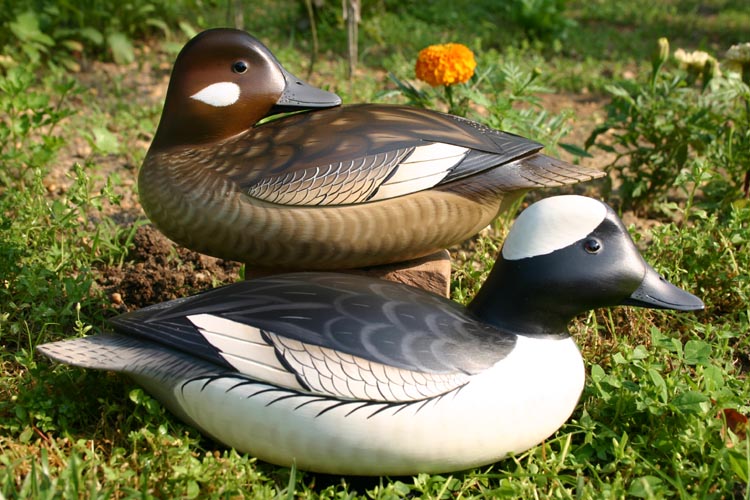John Lawrence
Active member
Time to start the summer!
Last summer I had the opportunity to talk to a fellow named Gene Kangas. He's written several books on antique decoys and folk art. In talking about what I do and in generalizations about what we do as a whole as decoy makers He brought up a point that has stuck with me. That point is that what we do is too safe, not enough risk. So being one who isn't afraid of controversy I started thinking about how to take more risks in what I do. I thought a lot about "comfort zones", and more importantly had I slipped into a comfort zone with my shapes and paint?
To tell you the truth the more I thought about it the more I felt I had. As a result in the last year I expended a lot of effort into the process of change. Pushing for new shapes and especially with my paint. One type of paint style that I have been experimenting with is Impasto. If you aren't familiar with that term it refers to using thick applications of paint to imply texture and depth. Much of the paint on my World Rig was done in that style although a little too subtle to see, more if you were to handle them.
You know I've found this type of paint lots of fun, and I like the effect. The hens that I have been working on are painted in Impasto and what I'm finding is that I'm getting more bold as the more I use the technique. The photos of the hen gadwall I put up two weeks ago were some pretty thick applications of paint. As it has cured out the ridges and valleys in the paint have added a lot of depth and some interesting texture I think. To me its very rewarding to have someone pick up and hold one of my decoys and to see their look when they like it. I believe that a really good decoy is not only pleasing to the eye but also a tactile sensation wherein the sense of touch adds to the overall experience.
This is that hen gadwall almost done. I have a few little darker details to add and then it will be on to something else.
View attachment P6010241.jpg.
View attachment P6010242.jpg.
View attachment P6010243.jpg.
View attachment P6010244.jpg.
View attachment P6010245.jpg.
This is a hollow pine decoy with a basswood head and Van Dykes eyes. painted in oils of course.
Last summer I had the opportunity to talk to a fellow named Gene Kangas. He's written several books on antique decoys and folk art. In talking about what I do and in generalizations about what we do as a whole as decoy makers He brought up a point that has stuck with me. That point is that what we do is too safe, not enough risk. So being one who isn't afraid of controversy I started thinking about how to take more risks in what I do. I thought a lot about "comfort zones", and more importantly had I slipped into a comfort zone with my shapes and paint?
To tell you the truth the more I thought about it the more I felt I had. As a result in the last year I expended a lot of effort into the process of change. Pushing for new shapes and especially with my paint. One type of paint style that I have been experimenting with is Impasto. If you aren't familiar with that term it refers to using thick applications of paint to imply texture and depth. Much of the paint on my World Rig was done in that style although a little too subtle to see, more if you were to handle them.
You know I've found this type of paint lots of fun, and I like the effect. The hens that I have been working on are painted in Impasto and what I'm finding is that I'm getting more bold as the more I use the technique. The photos of the hen gadwall I put up two weeks ago were some pretty thick applications of paint. As it has cured out the ridges and valleys in the paint have added a lot of depth and some interesting texture I think. To me its very rewarding to have someone pick up and hold one of my decoys and to see their look when they like it. I believe that a really good decoy is not only pleasing to the eye but also a tactile sensation wherein the sense of touch adds to the overall experience.
This is that hen gadwall almost done. I have a few little darker details to add and then it will be on to something else.
View attachment P6010241.jpg.
View attachment P6010242.jpg.
View attachment P6010243.jpg.
View attachment P6010244.jpg.
View attachment P6010245.jpg.
This is a hollow pine decoy with a basswood head and Van Dykes eyes. painted in oils of course.
Last edited:












